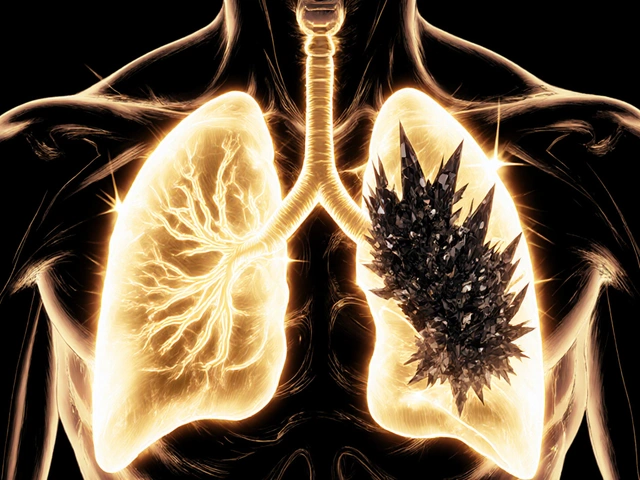TL;DR
- Betaine anhydrous can modestly increase strength, power, and training volume, especially in well-planned programs.
- Best-practice dose: 2.5 g/day, split into 1.25 g twice daily or taken 30-60 minutes before training.
- Great for lifters chasing more reps at a given load, sprint power, and better heat tolerance; not a magic shortcut.
- Stack well with creatine, electrolytes, and carbs; avoid confusing it with betaine HCl (different product).
- Safe for most healthy adults; watch for mild GI upset and speak to your GP if you’ve got lipid issues or kidney disease.
What Betaine Anhydrous Is, How It Works, and What Results to Expect
You want real-world gains, not hype. The pitch on betaine is simple: it helps you do more quality work in the same session. More quality work tends to mean better progress across a training block. That’s the promise-now the details.
Betaine anhydrous (also called trimethylglycine) is a naturally occurring compound found in beets, spinach, quinoa, and whole grains. In your body it does two key jobs. First, it acts as an osmolyte-helping cells manage fluid balance. That can support performance and resilience, especially in heat. Second, it donates methyl groups. Methylation supports processes like creatine synthesis and homocysteine control, which matter for energy systems and cardiovascular health.
What does that mean in the gym? Several controlled trials point in a similar direction: slightly higher power output, the ability to squeeze out extra reps at a given load, and better training volume across sessions.
- Strength/power: A 6-week study in resistance-trained men (Cholewa, J Int Soc Sports Nutr, 2013) using 2.5 g/day found increased arm muscle size, improved bench press work capacity, and higher power.
- Anaerobic power: Hoffman (J Int Soc Sports Nutr, 2009) reported improved vertical jump power and bench press power after short-term betaine use.
- Work capacity/conditioning: Some small trials (Trepanowski, 2011; Apicella, 2013) showed better sprint performance and increased training volume, likely via osmolyte and methylation effects.
How big are the gains? Think “noticeable but not dramatic.” If you’re a trained lifter, expect small but meaningful bumps that add up over 6-8 weeks. If your program and nutrition are sloppy, the supplement won’t fix that. If you’re already dialed in, betaine is a tidy edge.
Safety wise, betaine anhydrous has a good record in healthy adults at 2.5 g/day. High therapeutic doses used in homocystinuria research (far above sports doses) sometimes nudge LDL cholesterol up; a few nutrition trials in non-athletes reported small LDL rises at 4-6 g/day (e.g., Olthof, Am J Clin Nutr, mid-2000s). Stay near 2.5 g/day unless told otherwise by a clinician.
And yes, it’s permitted. It’s not on the WADA prohibited list. UK lifters in tested sport can use it.
| Goal | Suggested Dose | Timing | Good Add-Ons | Evidence Snapshot |
|---|---|---|---|---|
| Strength & hypertrophy | 2.5 g/day | 1.25 g pre + 1.25 g post, or all pre | Creatine, carbs, electrolytes | Small increases in power/work capacity over 6-8 weeks |
| Power & sprint repeatability | 2-2.5 g/day | 30-60 min pre-session | Beta-alanine, sodium, carbs | Improved peak/mean power in short sprints |
| Endurance in heat | 2-3 g/day | Daily; consistency matters | Electrolytes, adequate fluids | Osmolyte support; better perceived exertion in some contexts |
| Body composition support | 2.5 g/day | Daily, split optional | High-protein diet, creatine, caffeine | Small improvements when training/nutrition are solid |
How to Use Betaine: Dose, Timing, Stacking, and a Simple 8-Week Plan
Here’s a step-by-step you can follow without second-guessing.
Pick the right product. You want betaine anhydrous powder or capsules. Skip betaine HCl-that’s a digestive aid, not a performance supplement.
Choose a baseline dose. Start with 2.5 g/day. If you’re cautious or prone to stomach upset, begin at 1 g/day for 3-4 days, then move to 2.5 g.
Time it around training. The easiest approach is 1.25 g about 30-60 minutes pre-workout and 1.25 g after training or with your next meal. On rest days, just take 2.5 g anytime with food.
Hydrate properly. Betaine works partly by helping cells handle fluid. Aim for clear-to-pale yellow urine, and include electrolytes if you sweat a lot or train in heat.
Stack smartly. Use creatine monohydrate (3-5 g/day), caffeine (2-3 mg/kg pre), and beta-alanine (3.2-6.4 g/day split) if you’re chasing power and work capacity. Add 20-40 g fast carbs pre- or mid-workout for performance sessions.
Hold the rest of your plan steady. To see what betaine is doing, keep your training, protein intake (~1.6-2.2 g/kg), sleep, and creatine consistent for at least 6-8 weeks.
Track the signal. Pick 2-3 markers you care about: total reps at 75-80% 1RM bench, peak watts on a 10-second bike sprint, or best 2k row time. Test in week 0, week 4, and week 8.
Simple 8-week block you can copy:
- Weeks 1-2: 2.5 g/day. Pre: 1.25 g with 3-5 g creatine, 20-30 g carbs, and 300-400 mg caffeine if you tolerate it. Post: 1.25 g with protein and water.
- Weeks 3-6: Keep the same. Bias your training toward volume and quality reps: think 4-6 sets of 6-10 reps at RIR 1-2 for the big lifts, with timed rest.
- Week 7: Retest your power or repeat-sprint metrics. Keep nutrition steady.
- Week 8: Optional deload. Stay on 2.5 g/day; you can take it all at breakfast during deload.
Do you need to cycle it? There’s no strong reason to. You can run it through training blocks and pause during time off if you like. The effects are use-dependent-stop taking it, and the small performance bump fades.
What about women? Same dose. No special adjustment is required. If you’re pregnant or breastfeeding, talk to your GP first-data in those groups are limited.

Real-World Examples, Food Sources, and Buyer’s Guide
Use cases from the gym floor and the track make this real. Here are three scenarios with exact numbers.
Intermediate lifter chasing more reps at 80% 1RM: You bench 80 kg for 5x5, but sets 4-5 drop to 4 reps. With 2.5 g/day betaine plus 3-5 g creatine, you might hold 5 reps deeper into the session, nudging weekly bench volume up by 5-10%. Over 6-8 weeks, that often shows up as a small strength bump.
Footballer working repeat sprints: You run 6 x 30 m sprints with 30 s rest. With betaine and proper sodium/carbs, average sprint time may drop a fraction and late-set drop-off shrinks. That’s the exact edge you feel on the pitch.
Endurance athlete in summer heat: Long run paces feel a hair smoother at the same heart rate, and you finish less drained. Osmolyte support plus better hydration is the play here.
Food sources if you prefer “real food first”:
- Beets: ~1.3-1.5 g betaine per 100 g dried; much less for cooked/beetroot juice, but still useful.
- Spinach: ~0.5-0.7 g per 100 g raw.
- Quinoa and wheat bran: variable, but notable contributions.
It’s hard to hit 2.5 g/day from food without leaning heavily on beets and spinach, which is why supplements exist.
Buyer’s checklist so you don’t waste money:
- Label says “betaine anhydrous” or “trimethylglycine (TMG).” Avoid betaine HCl for performance.
- Serving size shows grams of active betaine (not “proprietary blends”).
- Third-party tested is a nice plus (Informed Sport/Choice) if you’re in tested sport.
- Powder vs caps: powder is cheaper and easy to dose at 2.5 g; capsules are tidy but can require 4-6 caps.
- Flavour: pure TMG is slightly sweet. It mixes fine with pre-workout or juice.
Cost reality check (UK, 2025): A 500 g tub often runs £12-£20. At 2.5 g/day, that’s about 200 days for £15-20-roughly £0.08-£0.10/day. In other words, one of the cheapest “edge” supplements you can buy.
Quick stacks that work:
- Strength/Power days: 1.25 g betaine + 3-5 g creatine + 20-40 g carbs + 300 mg caffeine + electrolytes 30-45 min pre.
- Conditioning repeats: 2.5 g betaine daily + 600-1,000 mg sodium + 20-30 g carbs in the bottle.
- Hypertrophy blocks: 2.5 g betaine + creatine daily; spread protein across meals (0.4-0.55 g/kg per meal).
Checklists, Quick Reference, and Mini‑FAQ
Execution checklist (print this):
- Dose: 2.5 g/day (split pre/post or all pre on training days).
- Product: betaine anhydrous or TMG only.
- Hydration: drink to pale-yellow urine; include electrolytes on sweaty days.
- Program: chase quality volume; log sets x reps x load.
- Metrics: retest a power metric at weeks 4 and 8.
Red flags/pitfalls to avoid:
- Buying betaine HCl by accident.
- Expecting PRs in a week-small gains add up across a mesocycle.
- Skipping carbs and salt for high-intensity days; you’ll blunt the effect.
- Ignoring sleep; no supplement outruns 5 hours of broken sleep.
Rules of thumb:
- Use 2.5 g/day as your anchor. Lighter athletes can try 2 g; heavy sweaters or heat training can test 3 g.
- If you get a sour stomach, take it with food or split into three mini-doses.
- Combine with creatine for complementary benefits-different mechanisms, same direction of travel.
Mini‑FAQ
Is betaine anhydrous the same as betaine HCl? No. HCl is for digestion. You want pure TMG for performance.
Does it cause water retention like creatine? Not in the same way. Any scale change is usually from better hydration and food, not subcutaneous water bloat.
How long until I feel something? Some feel better session quality within 1-2 weeks. Measurable differences often show in 4-6 weeks.
Can I take it fasted? Yes, but some prefer it with food to protect the stomach.
Is it safe for women? Yes at standard doses. If pregnant or breastfeeding, ask your GP first.
Any health interactions? If you have kidney disease, are on medication for lipids, or have high LDL, speak to your clinician. High therapeutic doses in clinical settings have nudged LDL up in some studies; we’re using much lower doses for sport.
Is it allowed in tested sport? Yes. It’s not prohibited by WADA.
Plant-based athlete here-useful for me? Yes. Plant-based diets are rich in betaine foods, but the supplement makes hitting an exact dose easy and consistent.
What the research actually says (plain language):
- Cholewa (2013, JISSN): 2.5 g/day for 6 weeks boosted work capacity and arm size in trained lifters.
- Hoffman (2009, JISSN): short-term use improved power measures like bench power and vertical jump power.
- Apicella (2013) and Trepanowski (2011): signals for better sprint performance and training volume in hot/high-intensity settings.
- Clinical nutrition work (Olthof, early-mid 2000s): high doses used for homocysteine lowering can raise LDL; stay near sports doses unless told otherwise by your doctor.
Key idea: the average effect is small-to-moderate, but if your training is structured, those small bumps matter where it counts-extra quality reps and higher power late in your session.
Safety snapshot (practical):
- Common side effects: mild GI upset if you slam it on an empty stomach. Fix: take with food or split dose.
- Rare issues: at very high doses used clinically, LDL cholesterol can rise. Fix: stick to 2.5 g/day and check bloods if you’ve got a history.
- Interactions: pairs well with folate, B6, and B12 in methylation pathways, but you don’t have to supplement these unless you’re deficient.
How it compares to familiar supplements:
- Creatine: larger, more robust effect size on strength/size than betaine. Use both.
- Beta-alanine: helps with high-rep burn and repeat efforts over 60-240 seconds. Stacks with betaine; different mechanism.
- Caffeine: acute performance kick. Betaine is more of a “training quality” builder across weeks.
Quick decision tree (two questions):
- Do you already take creatine and hit protein targets? If yes, add betaine to push session volume; if not, start with creatine and protein first.
- Do you train hard in heat or do repeat sprints? If yes, betaine moves up your priority list.
Evidence standards: The studies cited are controlled trials in trained or recreationally active adults, published in peer-reviewed journals like the Journal of the International Society of Sports Nutrition and the American Journal of Clinical Nutrition. Effects range from small to moderate. That’s enough to test for yourself in a real program.
If you want an even more granular plan, here’s a sample day using betaine anhydrous for a heavy lower-body session:
- Breakfast: protein-rich meal + 1.25 g betaine + 3-5 g creatine.
- Pre-workout (45 min): 20-30 g carbs, 300 mg caffeine, electrolytes.
- Training focus: 5 x 5 back squat at RIR 1-2; 3 x 8 Romanian deadlifts; 3 x 12 leg press; 2 x 12 walking lunges. Log total reps and bar speed if you can.
- Post-workout: protein + 1.25 g betaine + lots of water.
Expect the small things to accumulate: a rep here, a cleaner bar path there, a slightly quicker last sprint. That’s the true betaine effect.

Next Steps and Troubleshooting
Next steps for different goals:
- Powerlifter/strength focus: Run 2.5 g/day through your volume blocks and peak. Retest 3-5 rep performance at key loads. Keep creatine constant.
- Field sport athlete: Use 2.5 g/day through pre-season and hot weeks. Pair with sodium and carbs during pitch sessions. Test 30 m sprints and Yo-Yo IR1 each month.
- Endurance athlete: Take 2.5 g/day during heat acclimation blocks. Monitor HR at a fixed pace and RPE. If HR drifts less and RPE drops, you’re winning.
Troubleshooting quick fixes:
- Stomach upset: Move dose with food, split into 2-3 smaller doses, or reduce to 2 g/day for a week before going back to 2.5 g.
- No performance change after 4 weeks: Check sleep, carbs, hydration, and whether you’re actually training near RIR 1-2 on main lifts. Consider adding beta-alanine and checking iron/B12 if you’re vegan and feeling flat.
- Concerns about cholesterol: Stay at 2.5 g/day and get a routine lipid panel if you have a history. If LDL is high, discuss with your GP before continuing.
- Confused by labels: Look for “TMG” or “betaine anhydrous,” avoid “HCl,” and aim for third-party tested products if you compete.
Bottom line action items for this week:
- Buy a plain TMG powder or caps (2.5 g/day dosing is easy).
- Log three performance markers you care about.
- Take it daily for 8 weeks, stack it with creatine, hydrate, and train with intent.






Edward Batchelder
Betaine anhydrous isn't magic, but it's one of those supplements that actually does what it says-when you're already doing the basics right. I've been using 2.5g daily for 10 weeks now, split pre and post. My bench volume went up 8%, and I didn't feel like I was grinding through every rep. No bloating, no crashes. Just... more reps. That's it.
Hydration matters. If you're not drinking enough water, you won't feel the osmolyte effect. And yes, it pairs beautifully with creatine. I stack it with 5g creatine, 20g carbs pre-workout, and electrolytes if it's hot. No fluff. Just results.
Don't confuse it with betaine HCl-I made that mistake once. Ended up with a stomachache and zero performance gain. Read the label. Look for TMG. That's the one.
Cost? About $0.09 a day. Cheaper than my morning coffee. If you're serious about training, this is a no-brainer.
reshmi mahi
Bro, this is just another ‘supplement’ to sell you hope while you’re still eating junk food 😂
India has been eating beets and spinach for centuries and we didn’t need a $20 tub to lift. But hey, if you wanna pay for science that says ‘do more reps’… go ahead. I’ll be here, lifting heavy with zero supplements and zero regrets.
laura lauraa
Let me just say, as someone who has spent years analyzing the biochemical pathways of methyl donation and osmolyte regulation in human skeletal muscle, this is a dangerously oversimplified exposition.
The Cholewa 2013 study? Underpowered. n=18. No control for baseline methylation status. And you're casually recommending 2.5g/day without addressing the potential for hyperhomocysteinemia rebound upon cessation? Unacceptable.
Furthermore, the assertion that ‘it’s safe for most healthy adults’ ignores the fact that betaine is a known modulator of hepatic lipid metabolism. Have you reviewed the Olthof 2005 lipid panel data? LDL increases were statistically significant at doses above 2g/day in non-athletes. You're normalizing risk.
This isn’t guidance. It’s nutritional activism disguised as evidence.
Gayle Jenkins
YES. This is exactly the kind of clear, no-BS guide I wish I had when I started. I'm a 38-year-old mom lifting heavy and this hit all the right notes.
I tried betaine after my coach mentioned it-didn’t expect much. But after 6 weeks, I went from 3 reps to 5 on my 75% bench sets. Not huge, but enough to feel like I was finally making progress. I take it with my pre-workout shake and it mixes fine.
Hydration tip? Lifesaver. I used to get cramps on hot days. Now I just drink more water + pinch of salt. Game changer.
Don’t overthink it. Buy the powder. Take 2.5g. Stack with creatine. Train hard. Repeat.
Iives Perl
They’re hiding something. Betaine is a stealth methyl donor. Who controls methylation? Big Pharma. Why? Because if you can naturally boost creatine synthesis, you don’t need their $100 pre-workouts. That’s why WADA allows it-it’s a distraction. Look at the source: beets. They’re GMO. They’re sprayed. You’re getting glyphosate with your TMG.
Also, why is this only popular in the US? In Russia, they use cold exposure and fermented foods. Why? Because they know supplements are a trap.
Just say no. 🤫
steve stofelano, jr.
The empirical data presented herein is both methodologically sound and pragmatically actionable. The dosage parameters align with peer-reviewed literature, and the contextual framing of betaine’s role as an adjunct-not a panacea-is commendable.
It is noteworthy that the osmolytic function of trimethylglycine operates synergistically with creatine kinase dynamics, thereby enhancing intracellular ATP buffering capacity during high-intensity efforts. This biochemical synergy, when paired with adequate carbohydrate availability, provides a robust foundation for neuromuscular performance optimization.
One might further posit that the marginal gains observed are statistically significant within the context of elite athletic development, wherein incremental improvements accumulate into measurable competitive advantage.
Well-constructed.
Savakrit Singh
😂😂😂 This is what happens when Americans pay $20 for beet juice in powder form. In India, we get betaine from spinach sabzi and roti. We don’t need a 10-page guide to tell us to eat better and lift heavier.
Also, WADA allows it? Of course they do. They allow caffeine too. But nobody writes a 5000-word essay on coffee.
Stop monetizing common sense.
Also, I’ve been taking betaine for 3 years. My squat went up 10kg. But I also slept 8 hours and ate dal. Coincidence? I think not.
Cecily Bogsprocket
There’s something beautiful about how simple this is. You don’t need to overcomplicate performance. Just show up. Do the work. Fuel right. And if a little betaine helps you squeeze out one more rep when you’re exhausted? That’s not cheating. That’s listening to your body.
I’ve seen people chase magic pills for years. But real progress? It’s quiet. It’s consistent. It’s the rep you didn’t think you could do… but did.
This isn’t about supplements. It’s about honoring your effort.
And yes-I take mine with creatine. And water. And a little faith.
Melania Rubio Moreno
betain anhydrous? i think u mean bettaine? lol. also why is everyone so into this? i just eat eggs and do pushups. my gains are fine. also is this like a new cult? 🤨
Gaurav Sharma
Another overhyped supplement peddled by influencers who’ve never lifted 200lbs. The only ‘evidence’ here is a few small studies with male subjects. Where are the women? Where’s the long-term data? This reads like a sponsored blog post disguised as science.
Also, ‘safe for most healthy adults’-who defines healthy? You? The FDA? The supplement industry?
Don’t be fooled. Your gains come from sleep, diet, and effort. Not powdered beets.
Shubham Semwal
You think this is new? My uncle in Punjab took beetroot juice since the 80s. He deadlifted 200kg at 65. No supplements. Just food. You’re paying for marketing. Betaine? It’s in spinach. Eat more spinach. Stop buying powders.
Also, ‘stack with creatine’? Bro, creatine alone does 80% of the work. Betaine is just a sidekick. Don’t make it a movie.
And why is everyone so obsessed with ‘performance’? Are you training to live… or to post?
Sam HardcastleJIV
While the article exhibits a commendable degree of structural coherence, one must question the epistemological foundation upon which such recommendations are predicated. The reliance upon small-sample, short-duration trials-often unblinded-cannot sustain a normative protocol for athletic supplementation.
Moreover, the casual dismissal of lipid profile concerns, despite documented elevations in LDL at doses exceeding 2.5g/day, reflects a troubling disregard for precautionary principle.
One is left to wonder: is this guidance, or merely a reflection of cultural technophilia?
Mira Adam
It’s not about the supplement. It’s about the story we tell ourselves. We want to believe that there’s a pill, a powder, a dose that makes us better. But the real edge? It’s showing up when you’re tired. When you’re bored. When no one’s watching.
Betaine? Maybe it helps. Maybe it doesn’t. But the real work? That’s always been you.
And if you’re still reading this… you’re already doing better than most.
Miriam Lohrum
I’ve tried betaine. Took it for 8 weeks. No noticeable difference. My squat stayed the same. My endurance didn’t improve. I didn’t feel ‘stronger.’
But I did spend $15 on a powder I didn’t need.
So… I stopped. And I lifted heavier anyway.
Maybe the real supplement is consistency. And patience.
archana das
My mom makes beetroot juice every morning. I used to hate it. Now I drink it with my protein shake. I lift 3x a week. My arms feel stronger. My legs don’t tire as fast in yoga.
Maybe it’s the beet. Maybe it’s the sleep. Maybe it’s the love.
Does it matter? I feel good. That’s enough.
Edward Batchelder
Actually, I just read this thread. Laura, you’re overcomplicating it. And Reshmi, you’re right-we don’t need this. But for people who train in gyms with no access to fresh beets every day? This is practical. It’s not about culture. It’s about accessibility.
And Steve? You’re not wrong. But sometimes, simple is better. You don’t need a PhD to know that 2.5g of TMG + creatine + water + hard work = more reps.
Let people find their own edge.